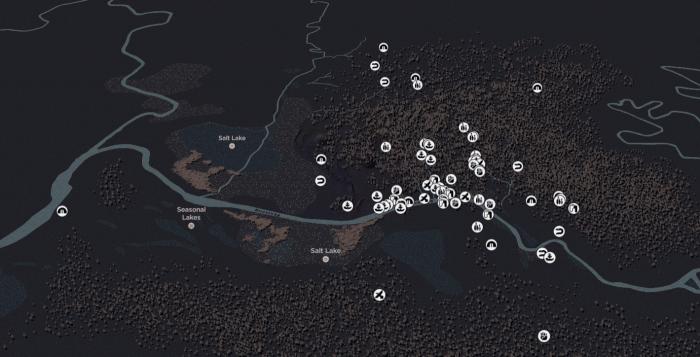Aboriginal Melbourne - City of Melbourne |

Immerse yourself in rich First Nations culture and 60,000 years of history with our interactive 'Mapping Aboriginal Melbourne' tool.
Discover 70 places of interest in Naarm that explore connection to Country, culture, and significant events.
Aboriginal Melbourne Interactive Map
Mapping Aboriginal Melbourne
Corroborees where Marvel Stadium and the MCG now stand, and Indigenous ceremonial rites on the grounds of South Melbourne Town Hall - these are the alternative histories of some of Melbourne's most recognisable sites, now mapped out online.
The Aboriginal heritage behind the sites of these post-colonial buildings are being revealed in a new interactive digital map developed by the region's traditional owners, the Wurundjeri Woi-Wurrung and Boon Wurrung/Bunurong, with the City of Melbourne.
The interactive project is the first of its kind for the city, and details places such as the former waterfalls where Queens Bridge now crosses the Yarra, the scarred trees near the MCG, and lesserknown sites such as where the South Melbourne Town Hall stands.
A geo-pin on the South Melbourne location reveals that before Europeans arrived, what would later come to be labelled Emerald Hill was a ceremonial and male initiation site overlooking a rich delta of wetlands and sand ridges, a glassy Birrarung (Yarra River) and Naarm-Port Phillip Bay.
The geo-pin then displays an 1840 painting by W.F.E Liardet, titled A Corroboree on Emerald Hill in 1840, depicting First Nations people practising those ceremonial rites.
Within five years of that painting's creation, however, the area had been rapidly colonised. In 1845, local newspaper The Argus reported: " It is but a few years since the aborigines encamped there nightly, and now there is a flourishing township. We have concerts instead of corrobories [sic] - civilisation supplanting primitiveness.''
By 1839 Melbourne Governor Charles Joseph La Trobe had issued an explicit instruction to the region's Chief Protector, George Augustus Robinson, that Aboriginal people were not to be permitted to enter the Melbourne township, and were to instead establish a camp at a location now occupied by the Botanic Gardens and Government House.
The council is working with traditional owners to add information to the interactive map, and challenge how the public looks at modern-day Melbourne and considers its history.
There's been strong interest in the tool from schools, libraries, childcare centres and other Aboriginal organisations, said the city council's director of Aboriginal Melbourne, Jason Eades.
" We can shine a light on Melbourne from the perspective of traditional owners, demonstrating that their connection to Country is not based in history, but very much in the present,'' Eades said.
Lord Mayor Sally Capp said the council wanted people to appreciate Melbourne's black heritage and culture.
" As people walk the streets we want them to have the opportunity to appreciate that this is a place with 60,000 years of human history,'' Capp said.
" From South Yarra to Kensington, Melbourne is brimming with significant spaces for traditional owners. While we know there is a lot of interest in these locations, most people don't know where to look or how to find them. This tool will help people unearth these stories and share them with others.''
This article by Jack Latimore is from the 16 April 2023 issue of The Age Digital Edition. To subscribe, visit "https://www.theage.com.au".
❊ Web Links ❊
➼ Aboriginal Melbourne - City of Melbourne
❊ Also See... ❊
➼ City of Melbourne Web Sites
Disclaimer: Check with the venue (web links) before making plans, travelling or buying tickets.
Accessibility: Contact the venue for accessibility information.
Update Page







